As the 295-foot Coast Guard barque Eagle cut through the waters of Casco Bay, 20-year-old Jack Coughlin gripped a thick rope with six fellow cadets and hoisted the staysail to the rhythm of “Heave-ho!”
In the kitchen, 19-year-old Michael Sherman, a culinary specialist in training, flipped perogies on the stove. And at the navigation station behind the bridge, 28-year-old Peter Driscoll used a pencil and protractor to plot real-time coordinates of the ship’s location.
For the 186 crew members sailing into Portland Harbor on Friday morning aboard the Eagle, referred to as “America’s tall ship,” and the Coast Guard Academy’s training vessel since 1946, it was business as usual.
But in Portland Harbor, it was a festival – part of a Maine Bicentennial celebration delayed a year by the pandemic. The festivities were planned by the Maine Bicentennial Commission to honor Maine’s ship-building heritage.
“Maine is renowned for the quality of the ships built here, the value of the wood that was used to construct these vessels, and for the variety of activities – from fishing to transportation, recreation to rescue, research to defense,” said Sen. Bill Diamond, commission chairman, in a statement in July. “The Eagle is a magnificent reminder of the majesty of sail.”
Lobstermen and recreational boaters pulled back on their throttles to witness the convoy of Coast Guard vessels surrounding the monstrous, white steel-hulled ship with its 147.3-foot mainmast gliding through Casco Bay.
Just behind the Eagle were students with the nonprofit Sailing Ships Maine aboard the wooden 131-foot Maine-built schooner Harvey Gamage. The 15 students and 13 crew members had spent the week sailing to Race Point at the tip of Cape Cod, Massachusetts, coordinating their arrival back in Portland with the Eagle.
The ship will be docked at the Ocean Gateway Terminal on Saturday and Sunday for public tours. Tour hours will be 10 a.m. to 11 a.m. Saturday and Sunday for military and first responders, and 11 a.m. to 7 p.m. Saturday and 11 a.m. to 3 p.m. Sunday for others.

The Andrew McAllister, a Coast Guard tugboat based in Portland, fires it’s water cannon as it escorts the USS Eagle into Portland Harbor on Friday. Johnny Liesman/Staff Writer
As part of the celebration Friday, dozens of Mainers, including many former and current Coast Guard members, were aboard the Eagle for a celebratory ride in the harbor.
Bruce Yates of Cumberland County, who served in the Coast Guard from 1979-85, boarded the Eagle early in the morning.
“I’ll tell you this: Today, they can’t get away with the shenanigans we used to,” said Yates, laughing as he approached the port side of the Eagle. “We were sailors back in the day, and I mean sailors. Still, these kids sure are lucky to be aboard this incredible ship.”
Nancy Lubin, 70, of Camden, grew up living on a sailboat in Buzzards Bay, Massachusetts. She was amazed by the rigor displayed by Coast Guard trainees.
“I’ve been assisted by the Coast Guard more than once,” Lubin said. “So I’m very grateful for their service. This just seems like an amazing opportunity for these incredible kids.”
Each summer, the Eagle sails out of New London, Connecticut, hosting first-year academy students, or swabs, for one week at a time; and cadets for multi-week training programs. Since May 8, the Eagle has crossed the Atlantic Ocean twice, stopping in the Azores off Portugal; Reykjavik, Iceland, and Bermuda.

Swabs in their summer training program hold onto a large rope used to tie the Eagle to the dock in Portland Harbor. Johnny Liesman/Staff Writer
Currently, 100 swabs are about to conclude their seven-week basic training program aboard the Eagle, as well as 24 first and second class cadets, 14 officers, and 48 enlisted personnel.
“They are unbelievable young women and men that made a hard decision to choose a profession of service to their country,” said Capt. Michael Turdo, the Eagle’s 29th captain. “On the Eagle, I tell them that you can’t discover courage unless you know fear. We introduce fear in a controlled and safe environment.”
Life on the Eagle is far from easy-going. Just recently, the crew was awakened by a midnight alarm signaling all to report to emergency sailing stations. A storm was fast approaching and if the crew didn’t adjust the sails, the Eagle would experience serious damage.
“We had to run around, wake everyone up and douse all the sails, it was really intense,” said Adam Pagliarulo, 20, from Bedford, N.H. “If we were about 10 minutes slower, we would have gotten nailed by the storm. It shows the importance of focusing on the small things and always being alert.”
That was Pagliarulo’s favorite memory on the Eagle. Other cadets have a similar liking for the thrill and dangers that come with being a sailor, like climbing to the top of the mast in strong wind and rain and standing watch for hours at a time during the night.
For the swabs though, the highlight of training on the Eagle is bonding with classmates in the mess hall after dinner, and throughout the day. Though they’ve been together for weeks, the rigor of basic training at the academy has kept them from really getting to know one another.

A Coast Guard cadet climbs up the mast of the U.S.S. Eagle in Portland Harbor on Friday morning. The main mast is 147.3 feet tall and cadets used to have to climb it without the benefit of safety clips or harnesses. Johnny Liesman/Staff Writer
“We’ve had a lot of time together, but we’ve been so busy during training that I hardly even know a lot of my fellow swab’s first names,” said Andrew Nichols, 18, of Knoxville, Tennessee. “So now on the Eagle it feels like the first time we can really get to know each other.”
Training the swabs on the Eagle are seasoned Coast Guard officers, including Mellisa Polson, the Eagle’s first female Sail Master.
Polson, who joined the Coast Guard in 2002 and was named Sail Master in January, has witnessed the Coast Guard change drastically as more women join.
“To see more and more women joining and staying in the service, and to get to this position, further highlights that there are a lot of other places we can still go,” Polson said.
The Coast Guard Academy class of 2025 is 38 percent women, but the story in the service is different. Today, women represent only 15 percent of the 40,000 active-duty members.
“Of course there is work to be done,” said Cadet Julia Rodriguez, 20, from Long Island, New York. “But there have been a lot of big steps in the right direction to make it as fair as possible.”

People take in the scene as tugboats maneuver the Eagle to a dock at Ocean Gateway in Portland on Friday. Ben McCanna/Staff Photographer
Aboard the Eagle, Rodriguez, Polson and 184 other crew members are not just responsible for one another, but also for protecting the Coast Guard’s most historic ship.
The Eagle, now the American military’s only active-duty sailing vessel, was built in 1936 by one of America’s greatest foes: Nazi Germany.
Flying the Nazi flag, the ship was known as the Horst Wessel and served as a training vessel for the German Navy. In 1945, the Horst Wessel was captured by the British Navy, and later won by the U.S. in a drawing of lots with the Soviet and British governments.
A prize in hand, but still thousands of miles from home, the Coast Guard was forced to team up with the German sailors on the long voyage across the Atlantic.
“A lot of them actually became good friends,” said Elena Calese, 23, a first rank officer, while standing beside an old picture of the Eagle washed up on the shores of a German village ruined by bombs. “And the fact that the ship made it out of the war undamaged, back in the U.S. and still functions as a training vessel, really amazes me.”
Copy the Story LinkSend questions/comments to the editors.

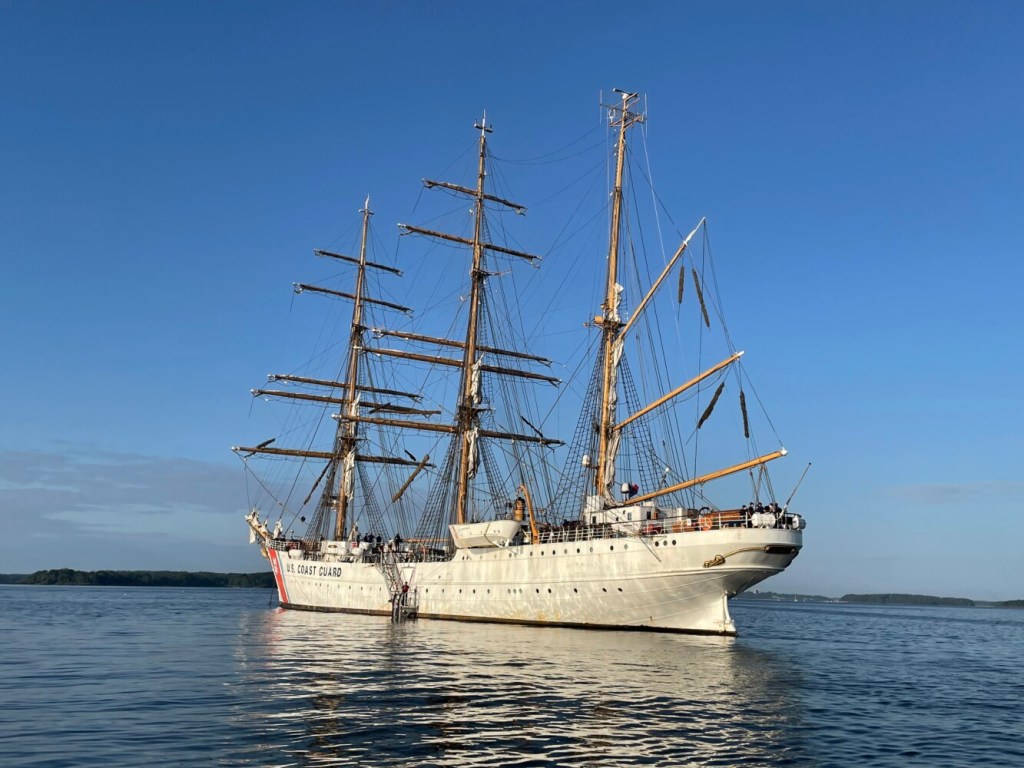
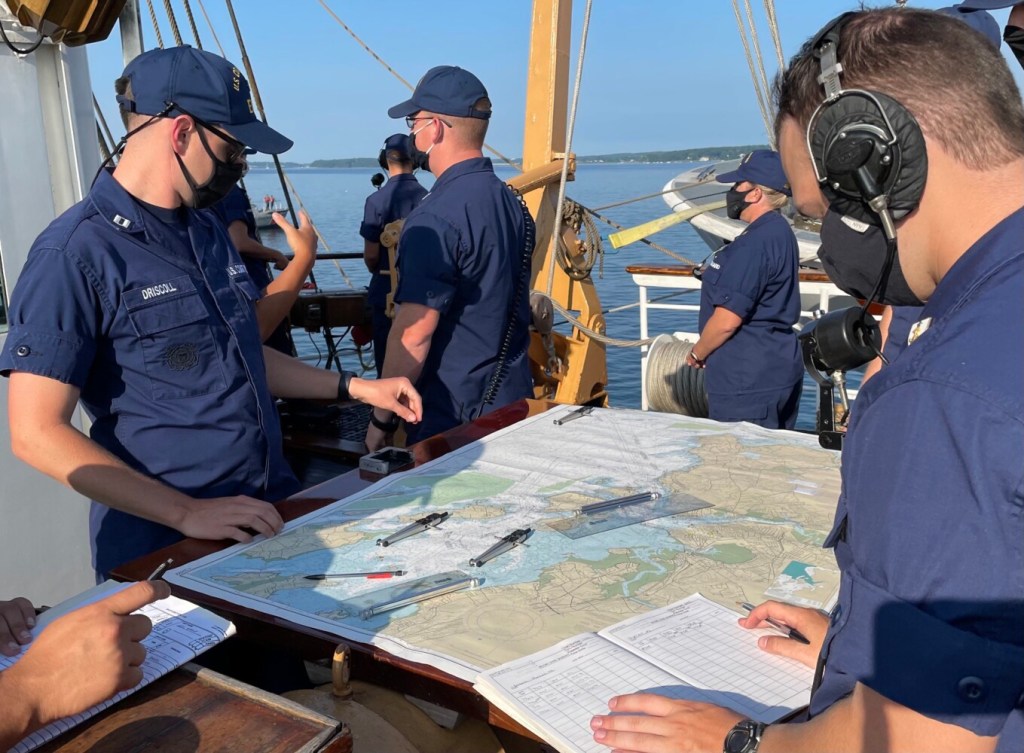
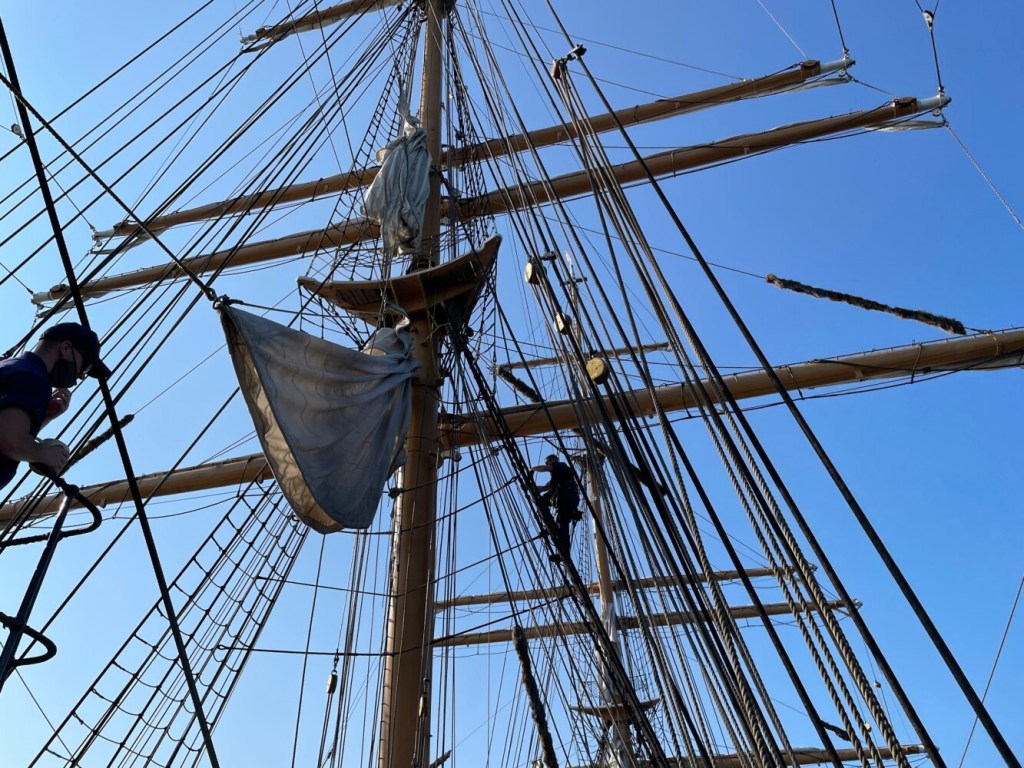
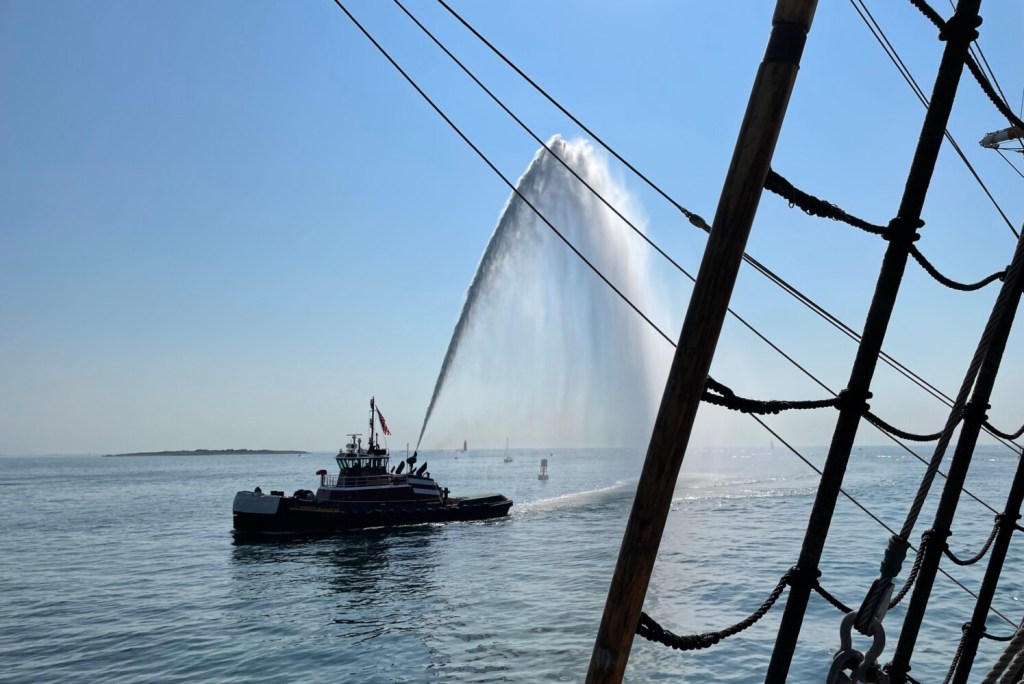
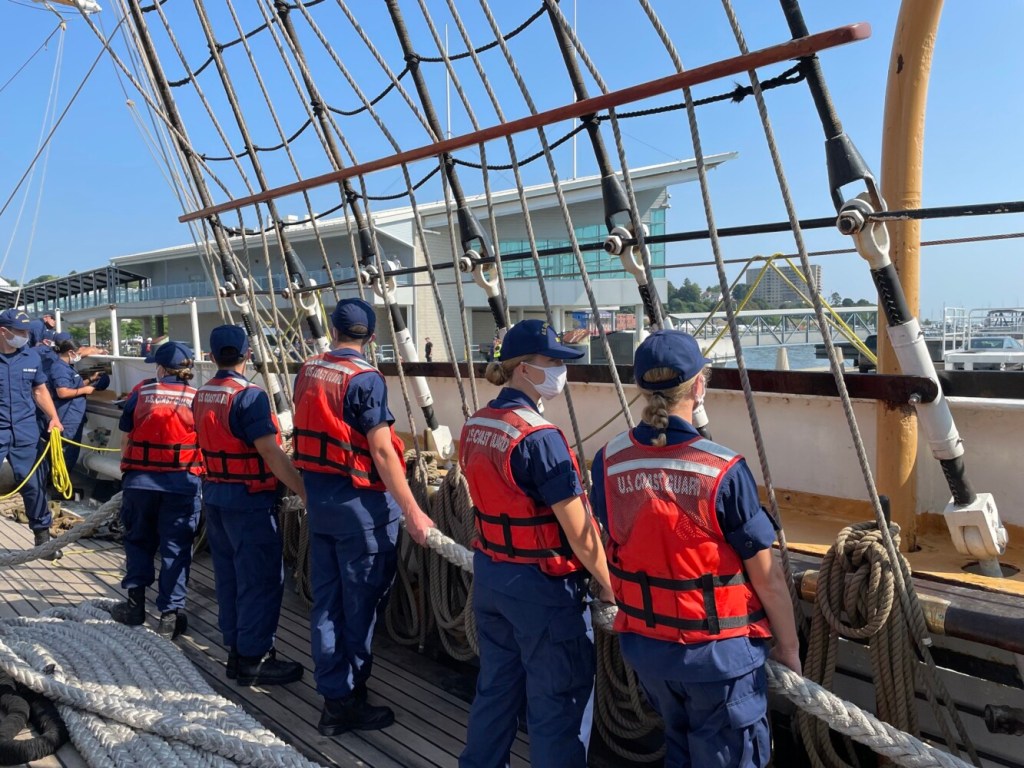
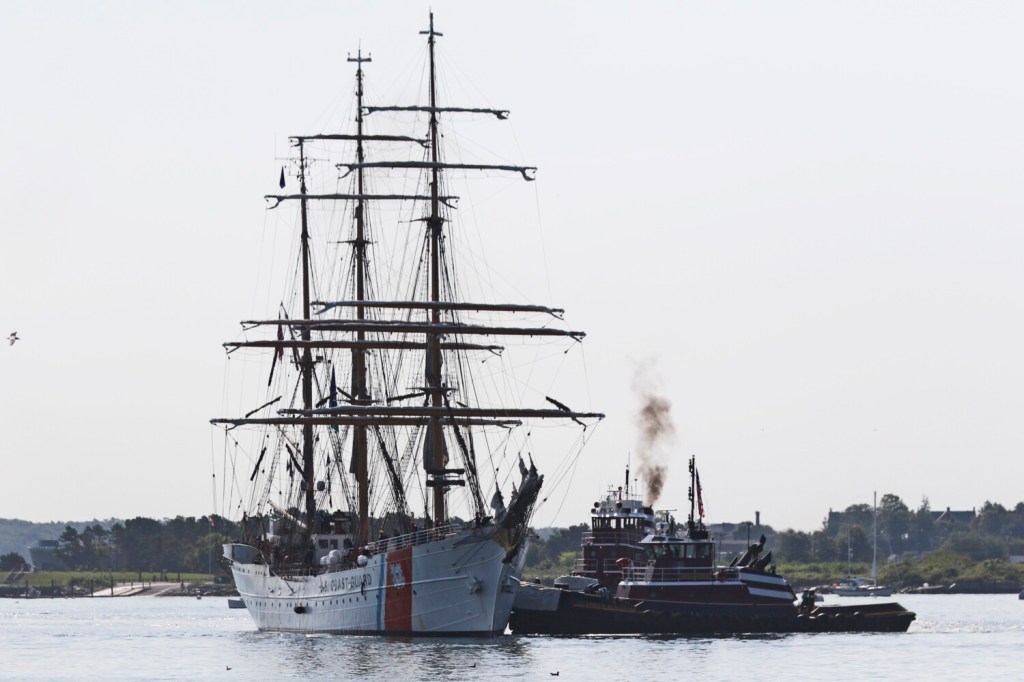
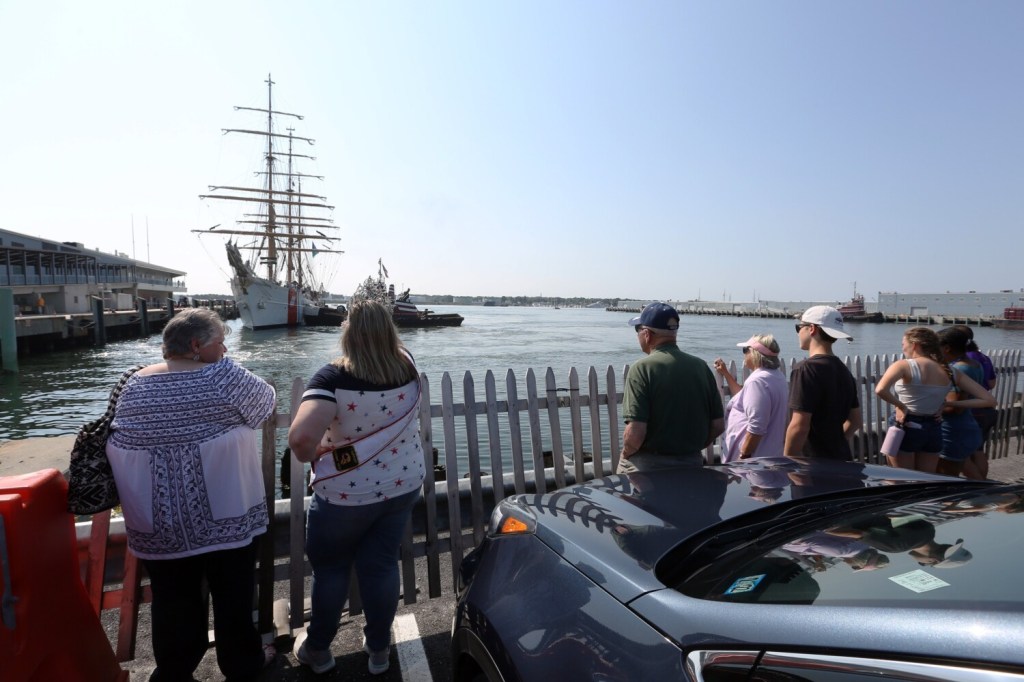
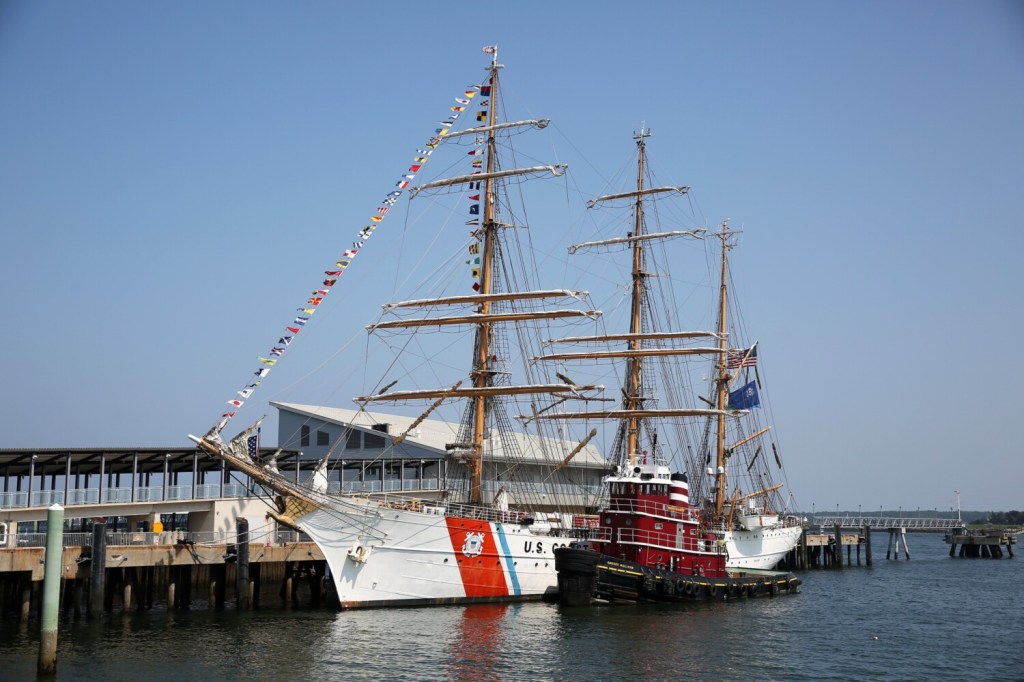

Success. Please wait for the page to reload. If the page does not reload within 5 seconds, please refresh the page.
Enter your email and password to access comments.
Hi, to comment on stories you must . This profile is in addition to your subscription and website login.
Already have a commenting profile? .
Invalid username/password.
Please check your email to confirm and complete your registration.
Only subscribers are eligible to post comments. Please subscribe or login first for digital access. Here’s why.
Use the form below to reset your password. When you've submitted your account email, we will send an email with a reset code.